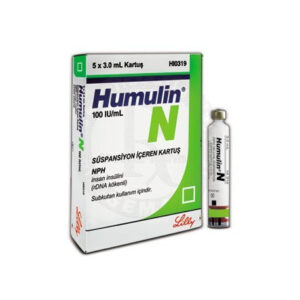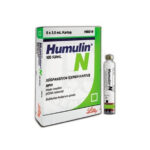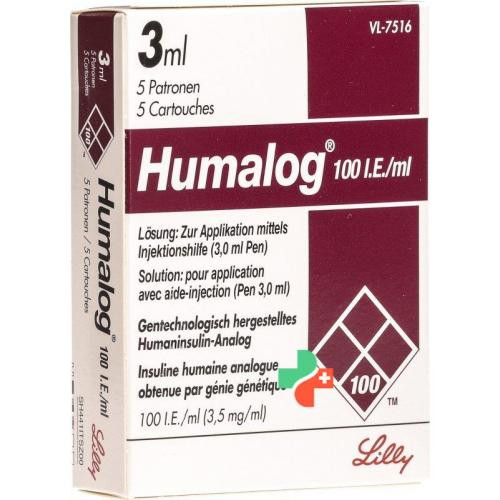

Buy HUMULIN N 100 (INSULIN) Online
$26.91
CHARACTERISTICS
ACTIVE SUBSTANCE INSULIN
FORM 5 PEN X 300 IU
MANUFACTURER LILLY

Buy HUMULIN N 100 (INSULIN) Online
$26.91
- Description
- Reviews (0)
Description
Introduction: Humulin N 100, containing insulin as its active substance, is a crucial medication in the management of diabetes mellitus. This comprehensive overview delves into the history, mechanism of action, therapeutic applications, administration, potential side effects, and considerations associated with Humulin N 100.
I. History: Insulin, discovered in the early 1920s by Frederick Banting and Charles Best, revolutionized the treatment of diabetes. Since then, various formulations, including Humulin N 100, have been developed to provide individuals with diabetes the essential hormone needed for glucose regulation.
II. Mechanism of Action: Insulin is a hormone produced by the pancreas that plays a central role in regulating blood sugar levels. Humulin N 100, a neutral protamine Hagedorn (NPH) insulin, is an intermediate-acting insulin that works by promoting the uptake of glucose into cells, thereby lowering blood sugar levels.
III. Therapeutic Applications: Humulin N 100 is employed in the treatment of:
- Type 1 Diabetes: It is essential for individuals with type 1 diabetes, who lack the ability to produce insulin, to maintain normal blood sugar levels and prevent complications.
- Type 2 Diabetes: In type 2 diabetes, Humulin N 100 may be used either alone or in combination with other antidiabetic medications to control blood sugar levels and improve overall glycemic control.
IV. Administration and Dosage: Humulin N 100 is typically administered via subcutaneous injection, with dosages tailored to individual insulin requirements, meal patterns, and lifestyle factors. The timing and frequency of administration may vary depending on factors such as meal timing and insulin sensitivity.
V. Potential Side Effects: While generally well-tolerated, Humulin N 100 may cause side effects, including:
- Hypoglycemia: The most common side effect of insulin therapy is hypoglycemia, characterized by low blood sugar levels, which may manifest as sweating, shaking, confusion, or dizziness.
- Injection Site Reactions: Mild irritation, redness, or swelling at the injection site may occur, but these symptoms are usually transient and resolve on their own.
- Weight Gain: Some individuals may experience weight gain with insulin therapy, particularly if blood sugar levels are not adequately controlled.
VI. Considerations and Monitoring:
- Blood Sugar Monitoring: Regular self-monitoring of blood glucose levels is essential to assess the effectiveness of insulin therapy, adjust dosages as needed, and prevent hypoglycemia or hyperglycemia.
- Diet and Exercise: Proper diet and regular exercise are integral components of diabetes management and should be emphasized in conjunction with insulin therapy to achieve optimal glycemic control.
VII. Conclusion: Humulin N 100 plays a critical role in the management of diabetes, providing individuals with the essential insulin needed to regulate blood sugar levels and prevent complications. Its versatility, safety profile, and effectiveness make it a cornerstone in diabetes care, offering patients the opportunity to lead healthy and fulfilling lives despite their condition. As research continues to advance, Humulin N 100 remains at the forefront of efforts to improve outcomes and quality of life for individuals living with diabetes.







Reviews
There are no reviews yet.